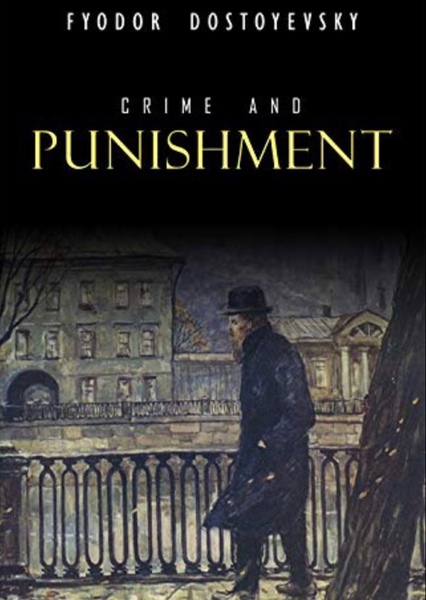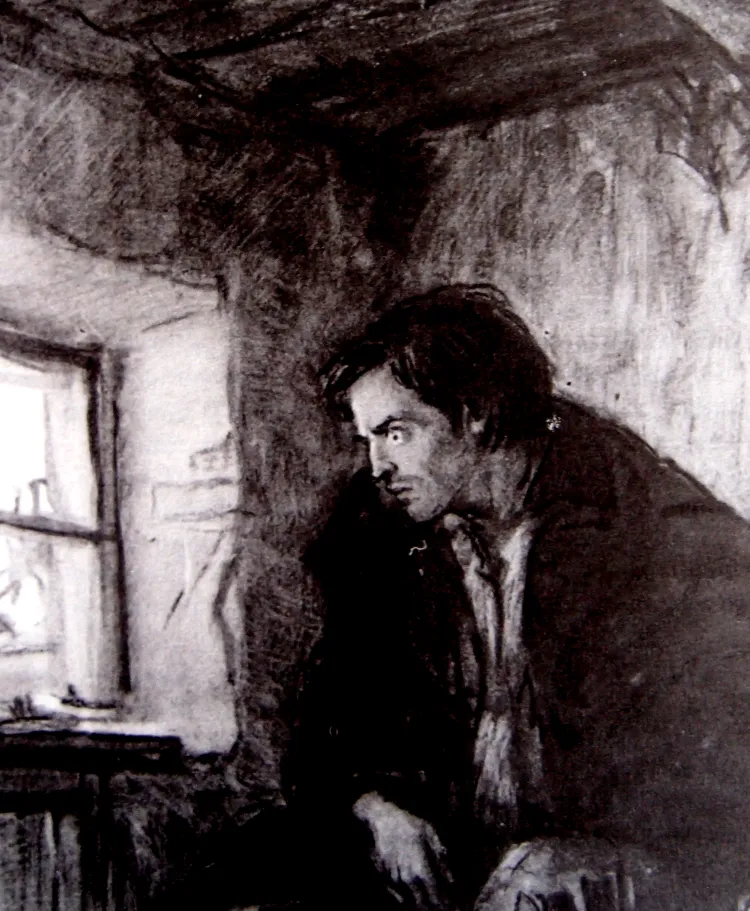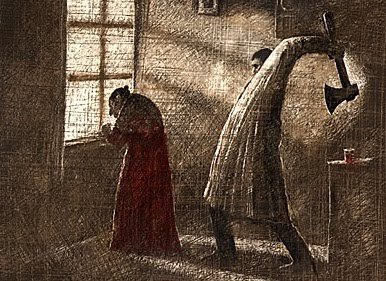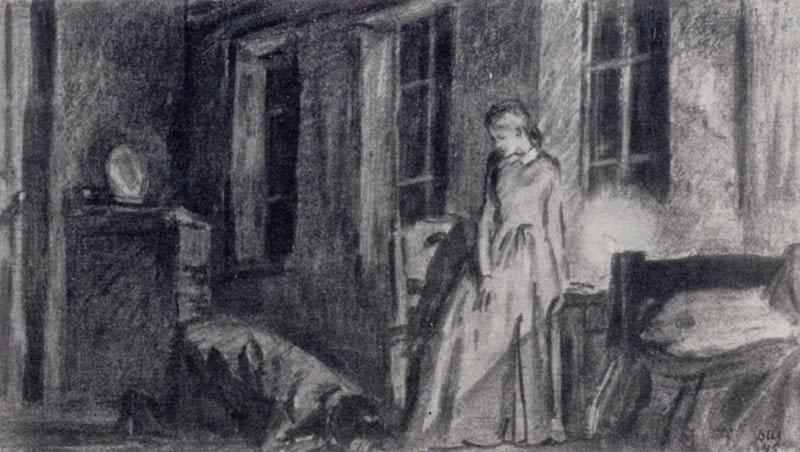The Depths of Crime and Punishment: A Literary Analysis
Uncovering the layers of guilt, morality, and punishment in Dostoevsky's timeless classic.
Crime and Punishment, a tale of redemption and moral ambiguity. A modern classic in its own right, it was authored by Fyodor Dostoevsky, a Russian icon. The story follows Rodion Romanovitch Raskolnikov, a talented yet conflicted student who has a creeping desire to break the Sixth Commandment – to commit a transgression, as Dostoevsky eloquently puts it. A major part of the novel deals with the psychological impact of Raskolnikov’s actions, who tortures himself and everyone around him.
Today, I offer my interpretation and analysis of the events in the book, why things happened the way they did, and whether they could have been any different. As always, spoilers ahead.

The Beginning
On an exceptionally hot evening early in July, a young man came out of the garret in which he lodged in S. Place and walked slowly, as though in hesitation, towards K. bridge.
For background purposes, let’s take a step back to understand just what kind of person Raskolnikov is. If one had to describe him as one of the Seven Sins, he would be, without a doubt, Vanity.
Pride is Raskolnikov’s strongest trait and also his most vulnerable. Pride leads him to be outraged over the fact that his sister is marrying a rich old man so that she can ensure a job for Raskolnikov. Pride leads him to ridicule his sister’s prospective husband. Pride leads him to bludgeon an old woman to death with an axe. There’s no getting around it; in the first part of the book, Raskolnikov is an incredibly proud, angry, and (to an extent) self-righteous youth.
Over the course of the story, we meet a variety of different and exciting people, all of whom play essential roles in Raskolnikov’s journey of rediscovering himself. The most prominent among them are his friend Razumihin; Sofya Semyonovna, a distraught prostitute; Porfiry, an investigator, and the charming Svidrigailov, the foil to our main character. People might accept the novel to build up to a cat-and-mouse chase between the killer and the investigator, and it does seem to play out that way in the beginning, but things take a different turn shortly afterward.
Rodion Romanovich: A Character Study

Raskolnikov’s mindset is a tough nut to crack, and his motivations even more so. Dropped out of college, he stays holed up in his shabby room for weeks on end, thinking and theorizing, before finally emerging upon a grim idea- the theory of the Übermensch, a man who rises above traditional morality as perceived by society and imposes his own code of living. These men are the harbingers of change and of revolution, theorized Raskolnikov, and he dreamt of himself being one of these men. Compared himself to Napoleon, no less.
Napoleon was a killer, a man who ‘transgressed’ in society by pushing forward for the expansion of his empire, resulting in the deaths of thousands. Yet, he was neither bound by nor punished according to the moral code upheld by society. Ergo, he was one of the Übermensch and was consequently allowed and even encouraged to perform such acts, unlike the ‘filthy’ commons.
So, in short, we have here a superiority complex coupled with distaste and disillusionment of society. With these thoughts at the forefront of his mind, Raskolnikov devises a plan to transgress (read: murder). His victim is Alyona Ivanovna, a wrinkled old pawnbroker.
The Murder and its Consequences

Alyona Ivanovna’s the lowest of the low- greedy, unscrupulous, and reportedly abusive to her sister Lizaveta. Raskolnikov compares her to a louse and even commends himself for removing such a stain from the face of the Earth. He plans to kill her and steal all her belongings that she keeps in a chest of drawers in the bedroom and use them to resume his studies in college and get his life back on track, but almost immediately, things go wrong.
For starters, Lizaveta walks in on him after he does the deed, so he is forced to kill her as well. Then he has to think up an escape strategy when two of the pawnbroker’s customers show up at her doorstep. He manages to trick them and escape, but even then, he takes only a handful of valuables and stuffs away most of them in a pit deep in the ground behind a fence.
And here, we begin to see the real Raskolnikov, the one beneath the cynical and ice-cold exterior. Even though he believes himself to have done nothing wrong on the surface, he is overcome with guilt and falls ill, nursed back to health somewhat by his friend Razumihin. Then, in constant delirium and paranoia, he revisits the crime scene and raises suspicion to himself. Stubbornly refusing to give in, he enters into an unspoken challenge with Porfiry Petrovitch, the head investigator looking into the murders, who seems to suspect him.
Amidst this, he has to deal with a number of other hurdles, namely his sister’s villainous fiancé Luzhin, and the funeral rites of Marmeladov, an acquaintance he’d met in a pub. There, he meets his daughter, Sofya Semyonovna, a distraught prostitute struggling to make ends meet for the family, and we see Raskolnikov pay them money to perform the funeral rites in spite of barely having anything for himself. The irony of a supposedly remorseless killer going out of his way to help out a struggling family need not be stated in words (even more ironically, I just did.)
Conclusion

The theory of the Übermensch comes full circle with the introduction of Svidrigailov, Raskolnikov’s sister’s former employer, who is infatuated with her. Svidrigailov is introduced as a full-on villain; he marries a woman older than him for financial reasons, constantly cheats on her (with her consent at times, apparently), and is even hinted to have poisoned her. Now a middle-aged widower, he wants Raskolnikov’s help to meet his sister, Dounia.
The novel makes it clear that Svidirgailov is an Übermensch. He knows what he wants, and he takes them, no matter who he crushes along the way. He loves to have a good time and gets away with pretty much everything, thanks to his money and status. The reason he serves as such a perfect foil for Raskolnikov is that he’s a wake-up call, a warning to our struggling protagonist about whether this is the kind of person he really wants to be.
Raskolnikov eventually confesses his sins to Sofya and is unsure of what to do with himself, but after a conversation with Svidrigailov (who, by the way, finds out about the murder and tells Dounia all about it), he turns himself in, his tortured worldview slowly healing as he spends his sentence in Siberia, accompanied by Sofya who regularly writes to Dounia and Razumihin, now married.
Raskolnikov’s time in prison is symbolized by his coming to terms with himself. He still doesn’t quite understand what was wrong with having killed an old pawnbroker nobody even cared about, but he understands that the path of the Übermensch is not his to walk, and not for any decent person, for that matter. Sofya helps him heal and move on, urging him to reflect on God and that it wasn’t for him to decide whose life was worth taking, albeit in a very muted way.
What happened to the actual Übermensch, you ask? No worldly pleasures last forever, and even Svidrigailov understood that. He makes a last-ditch attempt at Dounia, who rejects him. In the end, having lost all things of meaning in his life, he shoots himself early morning in an empty street, reflecting on his life and still unapologetic.
No analysis of any sort can do justice to Dostoevsky’s masterpiece, much less one written by an amateur reader. I strongly suggest you read the original novel if you haven’t done so already. It’s a classic for a reason.
